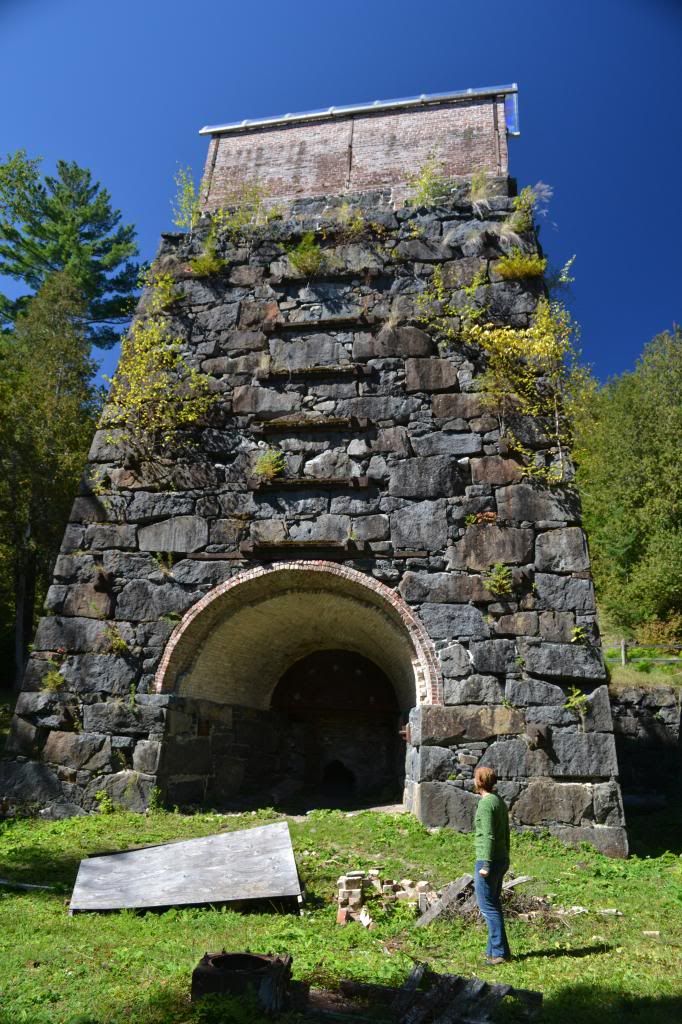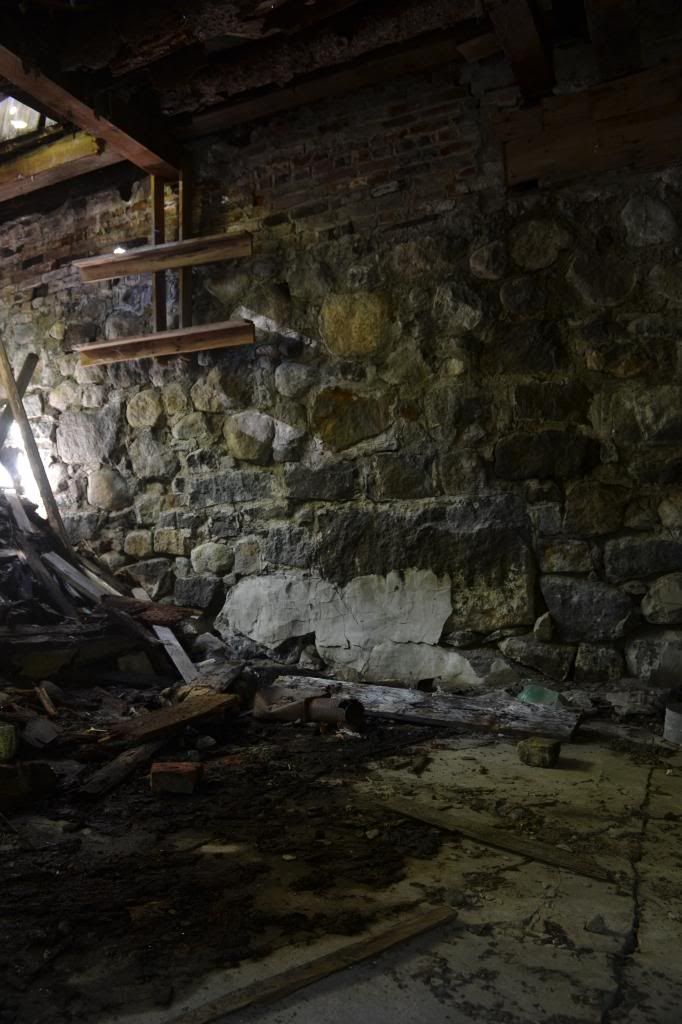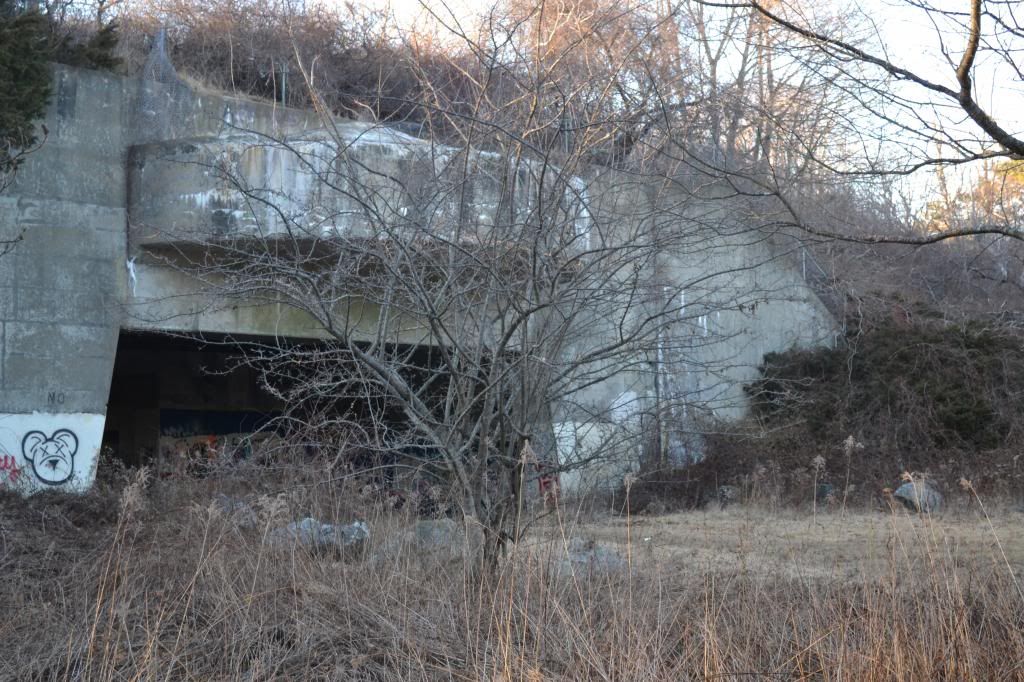Deep in the wilderness of the eastern Adirondacks of New York was a small mining town that has gone by several names: McIntyre, Adirondac and Tahawus. It was once a major site for iron mining and smelting, the old McIntyre blast furnace built in 1854 still standing testament to the existence of the industry. The iron ore deposits were discovered in 1826 by Archibald McIntyre and what was later dubbed the Upper Works was mined for the ore until the mid 1800s. A strange impurity was found in the iron ore that made the task of smelting the iron rather difficult for the technology of the time and finally the mines closed, the people left and the town fell to the wilderness. However, lumber was a lucrative business on the foothills of Mt. Marcy and abundant game brought sport hunters. Later named the Tahawus Tract, the private hunting club leased and managed the land from the miner's heirs. Photo of the McIntyre blast furnace from www.clearwater.org
In the 1940's technological breakthroughs rekindled the mining industry in the Tahawus Tract when the previously mysterious mineral called titanium could be processed. National Lead Industries continued working the mine until 1989, the rough estimate of the titanium mined in the neighbourhood of 40 million tons.
I was attending the Fall NRO (Northeastern Regional Organization of the National Speleological Society) gathering at Natural Bridge and Caverns in the southern Adirondacks. Even though I attended college in Vermont, just a spitting distance from the New York border I had always concentrated my efforts close to campus. So after an enjoyable weekend of caving was getting ready to head home when someone had mentioned the local "ghost town". was immediately interested and postponed the five hour drive back to the seacoast of New Hampshire.
After some Googling, I found some vague directions to "Tahawus" and some photos. Tom, Dave and Ramon decided that they were going to head back to the Boston area instead and I set off.. It took us a little bit of driving in circles since GPS signal in the area is not reliable and I didn't have a map, but finally when I spotted Upper Works Road and was heading for the access to Mt. Marcy, I knew it was the right path.
As I was heading up the road I spotted the old McIntyre Blast Furnace and stopped at the turn off. Several trails lead around to the base of the structure. The furnace is covered by a glass structure and there are piles of brick stacked neatly nearby. Evidently there had been some restoration work done to stabilize the furnace. On the backside, the one that faces the Hudson River there is an opening into the chimney. I took the time to crawl in through the opening and shot a few pictures looking straight up the stack. There are the remains of the duct-work where air would be blown into the heart of the furnace where a combination of powdered limestone or marble would be added to the iron ore to burn out the impurities. There are also the foundations for more machinery closer to the river.
After exploring the blast furnace I continued down Upper Works Road and eventually passed several buildings, one of which is preserved very well and had a sign indicating that Theodore Roosevelt was staying in the village of Tahawus in 1901 with his family when a ranger rode out to inform him that then President William McKinley was in critical condition. Roosevelt, upon arriving in Buffalo, learned that William McKinley died and later took the oath of office.
Further up the road I started passing more buildings, these in not so great shape. Time and flooding had taken its toll and the buildings were in a severe state of decay. I parked along the side of the road as this was its end and is the trailhead for Mt. Marcy and the surrounding peaks.
Starting down a faint footpath the first structure I found was the Pump House. The roof is long gone, the machinery now silent. I explored this and the surrounding houses, all of which are not structurally sound in the least and great care was necessary to make sure that I didn't bump into anything that could cause a floor to collapse from above. I toured the area for about another hour before having to start my now six hour drive back to NH.
Click on the gallery below for larger images of the furnace and other structures of Tahawus Village









The part that I visited is the part that is publicly accessible. The mines themselves are not and remain the property of National Lead Industries. The old mine pits are not visible from the road as there is a pile of tailings that obscure them on the opposite side of the river from Upper Works Road.
A little more about the history of the area can be found at the Adirondack Park Agency's webpage. This is a very easily accessible area due to the direct access road, but due to this it loses that "ghost town" feel. However, it is still a great place to visit, perhaps on your way to hike up Mt.Marcy, the highest peak in New York State. If you do decide to enter the buildings, it is at your own risk. Be aware that the floors in most of the buildings are not stable and have collapsed through in many. There is a lot of broken glass and rusting metal, so wear long pants and gloves are advisable to avoid getting cut. There is very little evidence of vandalism which is nice to see, so please respect what remains and do not remove material from the site so others may enjoy.



















